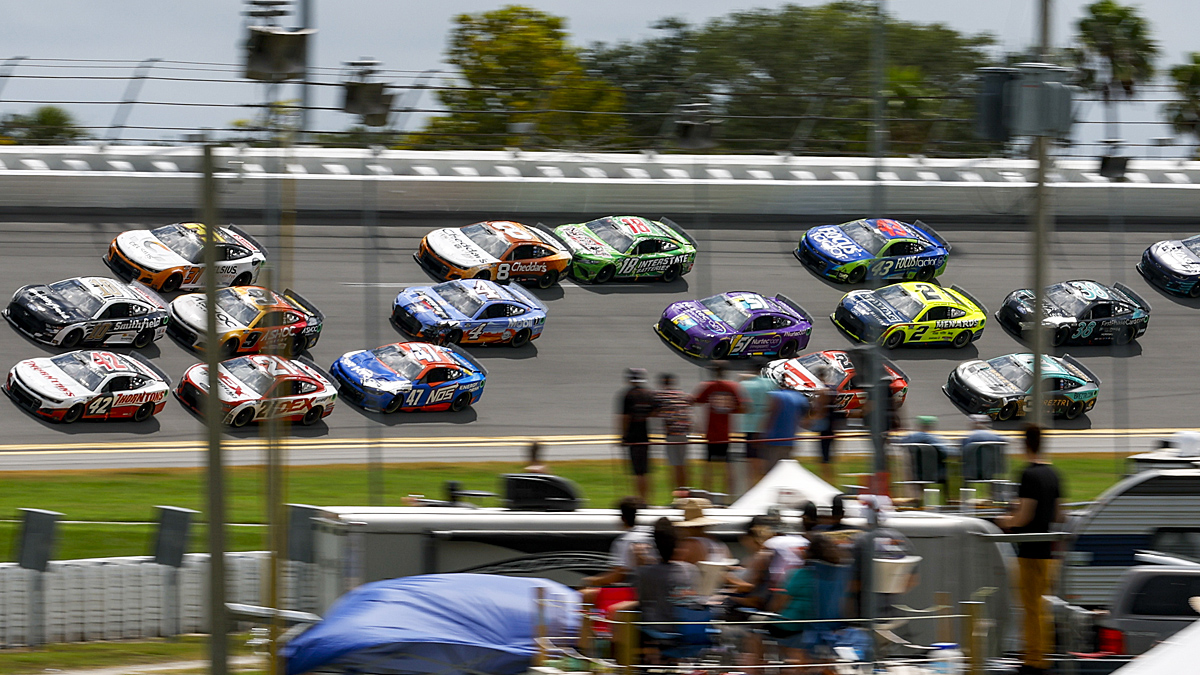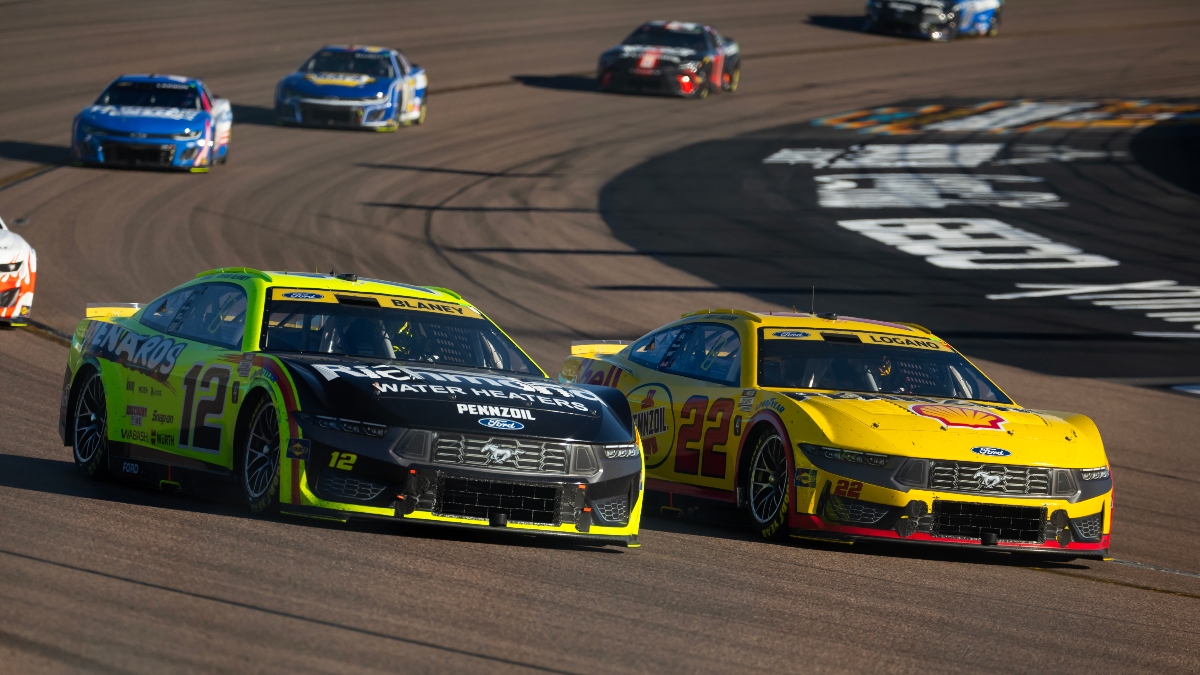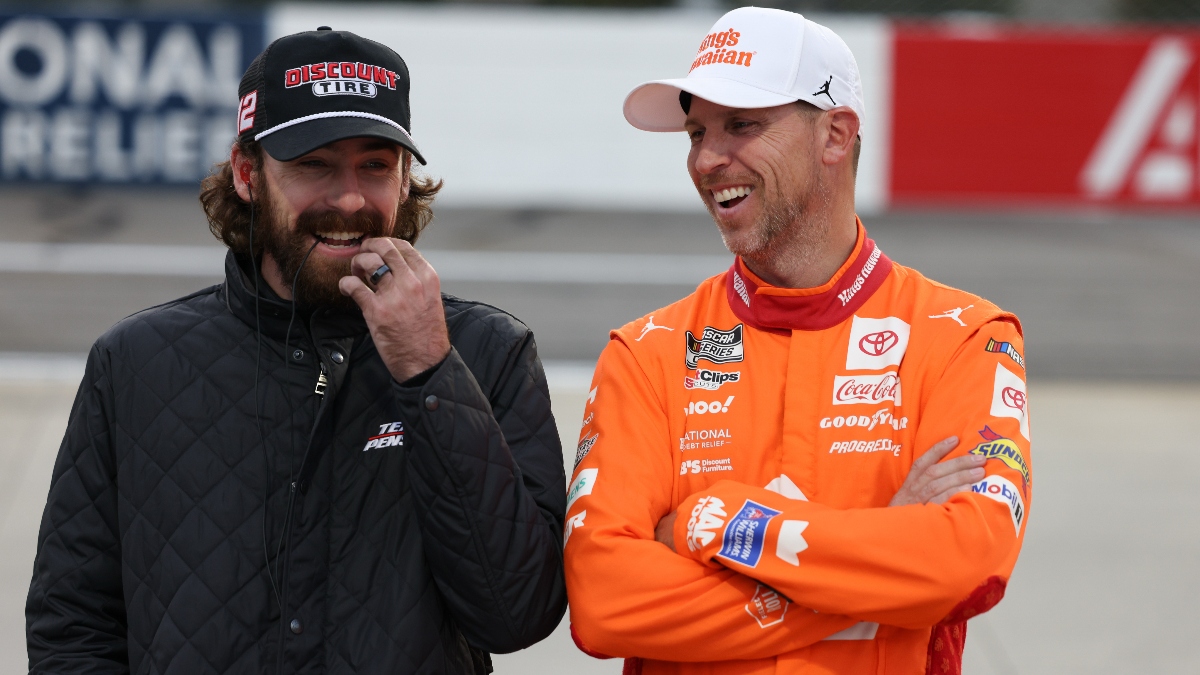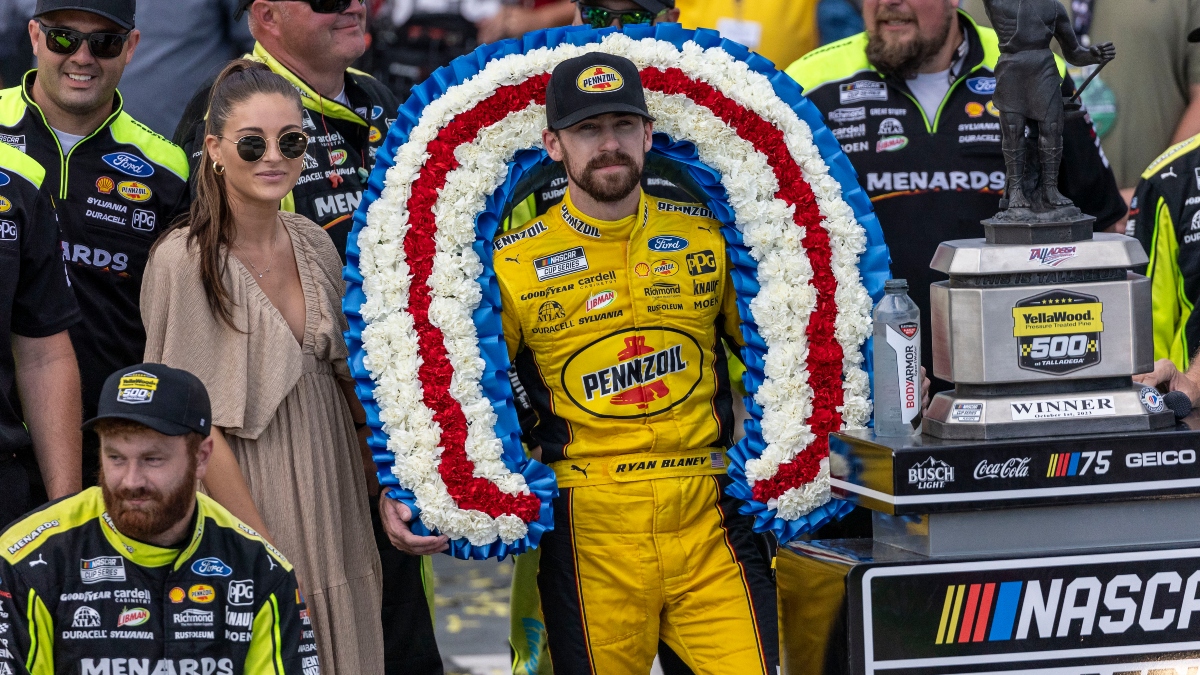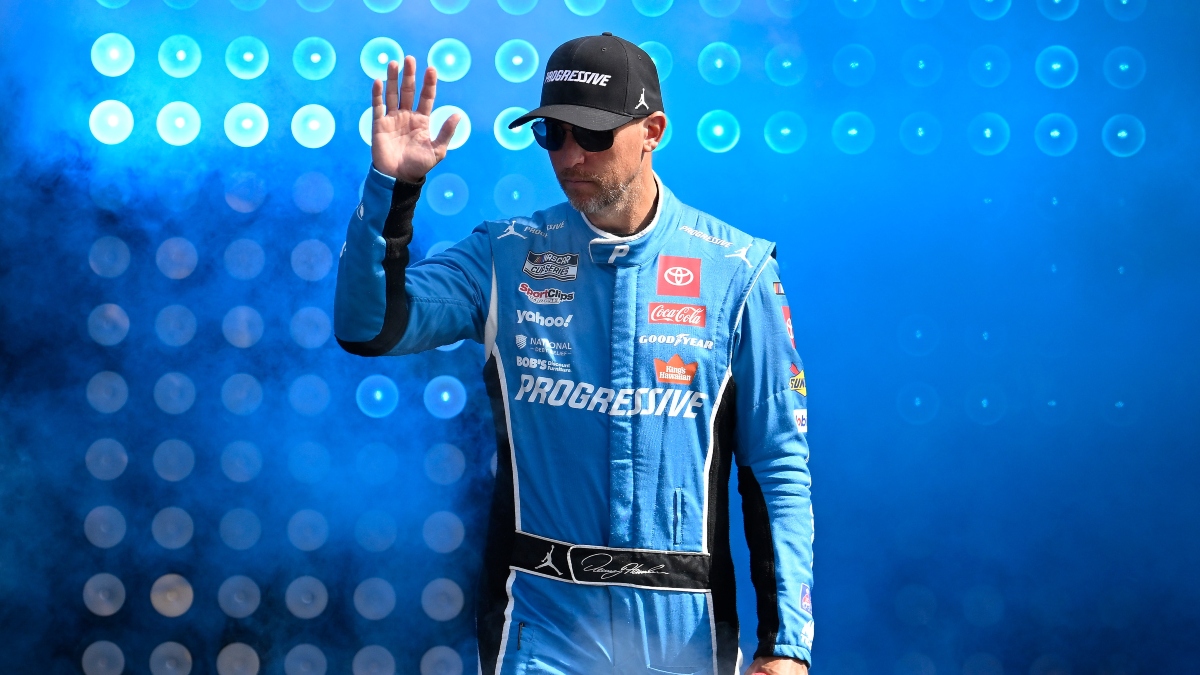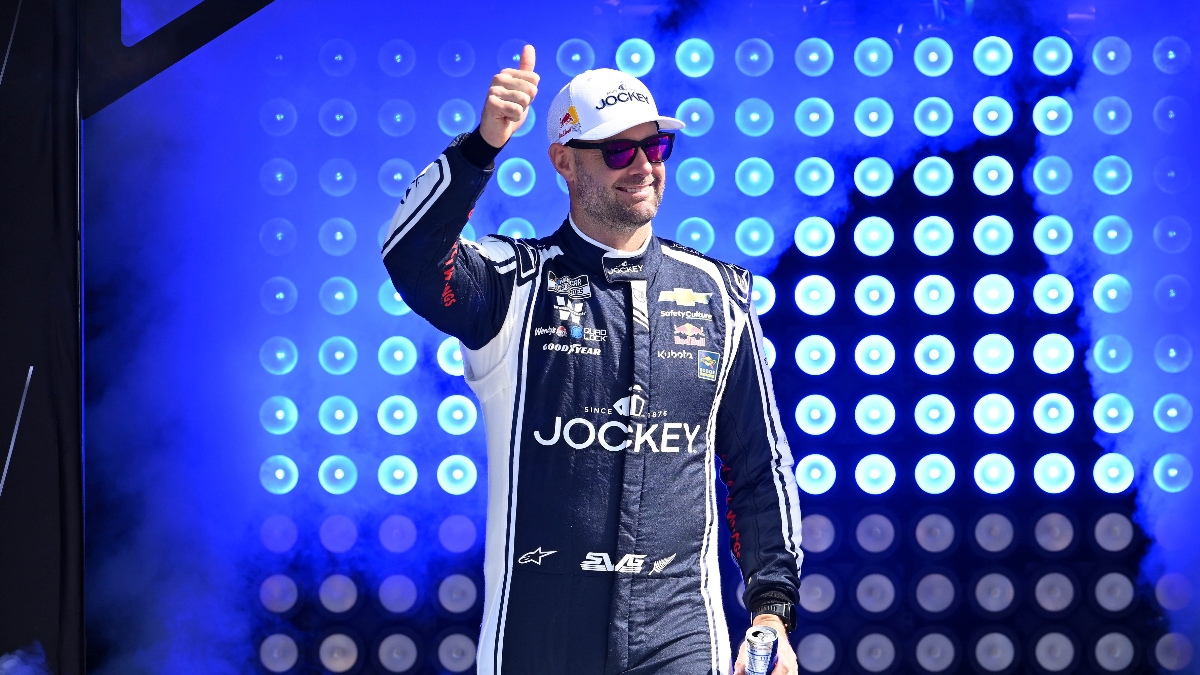If you haven't heard by now, this past Sunday, for the 2022 Coke Zero Sugar 400 NASCAR Cup Series race at Daytona, a bettor won $1 million off of a $13.49 bet.
The four-leg parlay of top-10 finishers cashed when Cody Ware (+2000), B.J. McLeod (+2000), Landon Cassill (+1500), and David Ragan (+950) all finished 10th or better after a crash-filled race.
Naturally, people want to know how they too can win a million dollars by betting on motorsports.
The tough news is, you won't.
Betting parlays is generally an ungainful and losing proposition in the long run. That's why books offer them!
But that doesn't mean you should never bet them in motorsports. There are situations in which they can not only be fun, but long-term gainful, even if the chances of the parlay hitting are very low.
So let's take a look at the do's and don'ts of betting parlays in motorsports.
1. DO know the odds calculations.
Let's say you are parlaying two props whose odds are offered individually at +500 apiece. What are the fair odds of the full parlay in this situation?
The Action Network parlay calculator is a great tool to help you run the numbers.
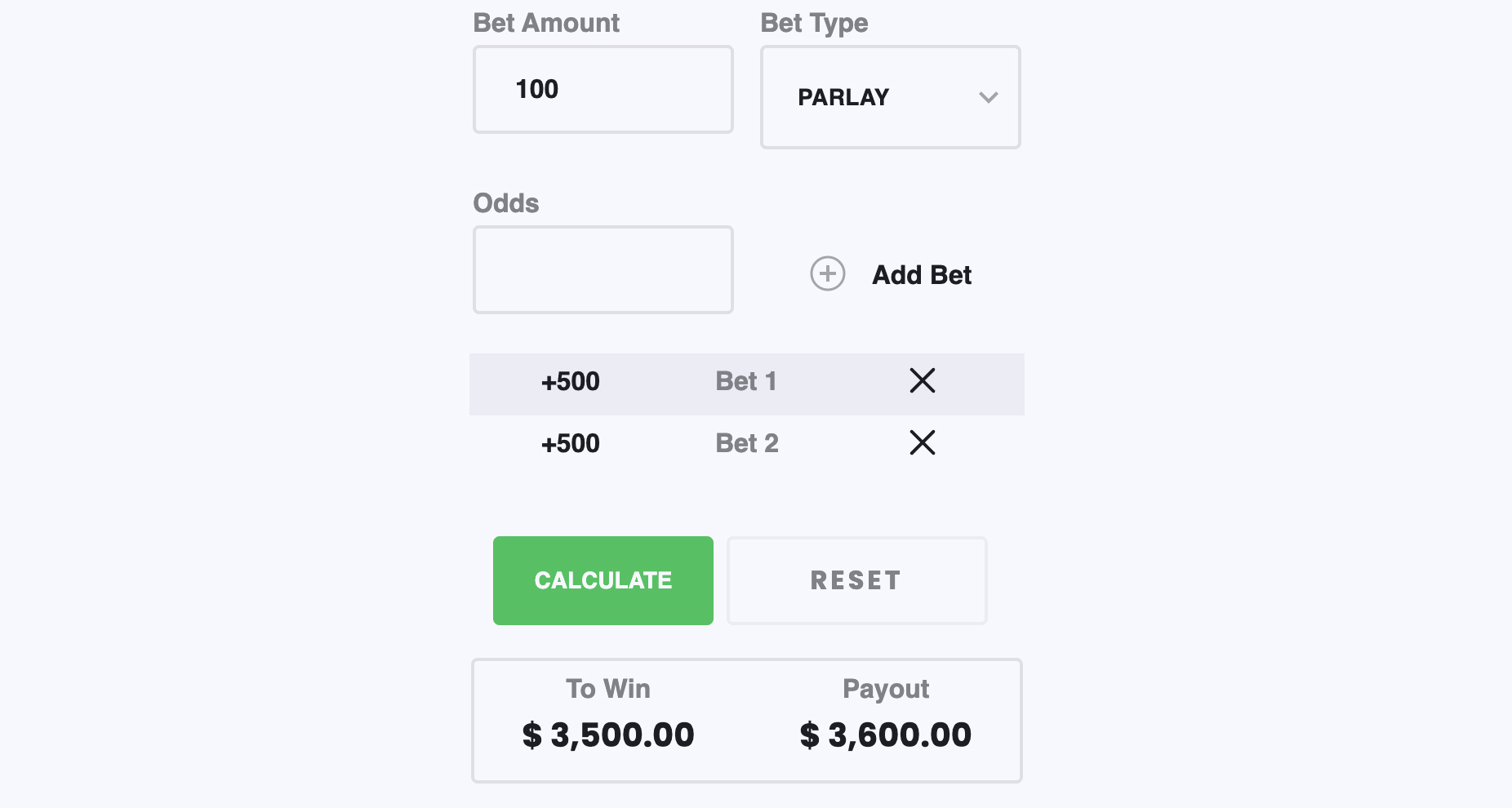
We can see, in this situation, the parlay in this example should pay out $3500 and return our $100 bet.
The math behind that is pretty simple. Each bet that's offered at 5-to-1 odds needs to hit one in six times to break even. Therefore in decimal odds, it becomes:
6.00 x 6.00 = 36.00
36.00 – 1 = 35.00
So if a book is offering fair odds, we'd expect them to pay this parlay out at +3500.
If a book is offering less than this number, they are holding more than they already do on each of the individual bets.
2. DON'T bet the parlay if you wouldn't bet each leg individually.
Calculations aside, it's not wise to bet a parlay if you wouldn't make each leg of the bet individually, assuming the bets aren't correlated.
I often see bettors use parlays of race winners across multiple races to get "better odds" in the second race on a driver they think is likely to win.
That's a fallacy.
First off, you're not getting better odds on the second driver. You're only getting better odds on him if the first bet hits. And there's no guarantee the first bet hits.
Let's look at another example.
Say you parlay on A.J. Allmendinger to win the XFINITY race on a Saturday at +300 with Chase Elliott to win the Cup Series race on Sunday at +500.
Even if the book offers a fair +2300 on the parlay per the parlay calculation, this isn't a bet to make if either leg of the bet is a poor bet individually.
Let's say Elliott's true odds to win are only 12.5%. That equates to fair odds of +700.
Then the expected value of the Elliott bet alone gives us a long-term ROI of -25%.
Even if Allmendinger is fairly valued, or even slightly undervalued, you're still making a losing bet. The only way this parlay turns gainful is if Allmendinger is offered at odds greater than +433 when fair value on him winning is at 25%, or +300.
But in that event, you should just be betting Allmendinger alone and not parlaying it with a losing bet just to break even.
These types of bets are all over the place in motorsports. For example, in 2022 BetMGM has often offered prop bets in which the bet wins if driver A finishes as the top Ford, driver B finishes as the top Chevy, and driver C finishes as the top Toyota.
First off, they are usually lopping off even more than the fair odds you should expect from the parlay calculation. Second, the vast majority of the time, at least one of these bets is a -EV bet.
3. DO parlay multiple independent +EV bets, but size appropriately.
As a counterpoint to the thought above, it is OK to parlay multiple +EV bets as long as each bet result is independent of the other.
The main point to make here is that you should scale your betting size appropriately.
Because we're parlaying multiple bets together, the expected odds of the total parlay are typically very low.
As a result, it can be common to go on long losing skids, even if each parlay is a good bet.
If you aren't scaling your bet size appropriately and practicing proper bankroll management, you can go bust by betting even the best of parlays very quickly.
4. DON'T parlay negatively correlated bets.
The $1 million winning parlay hit because four drivers finished inside the top 10.
Parlaying top-10 bets is a very bad value proposition at least 99.9% of the time, even if each driver's individual odds are +EV!
That's because we're parlaying two +EV bets that are "stealing" from each other.
What I mean is, if you parlay two drivers to finish inside the top 10, then what you really need is one driver to finish inside the top 10, and the other driver to finish inside the top nine.
But the book isn't offering you top nine odds, which should be longer than top 10 odds (it's harder to finish inside the top nine than the top 10).
Instead, they are still offering you top 10 odds on each driver.
This compounds if you turn this into a three (or more) leg parlay.
Books may disguise a bet as "all Joe Gibbs Racing drivers to finish inside the top 10."
This is a parlay of four drivers finishing inside the top 10. That means one needs to finish 10th or better, another 9th or better, the next 8th and the last one 7th or better.
If the four top-10 odds are -200, -200, -150, and EVEN, the parlay calculator says +650 for the total bet should be fair. So if the book offers +750 for this bet, it looks like they are offering you a great deal.
The problem again is the fact that since they all need to hit, one driver is stealing a top 10 spot from another driver. This compounds with each additional driver that must finish inside the top 10.
Other examples of this in motorsports may be "both Ferrari drivers to podium," or two or more drivers to score points.
5. DON'T make the crazy, multiple-legged parlay. Unless…
We all want to hit the big, crazy, multiple-legged parlay that pays us a huge return. That's part of the fun and allure of betting and sweating.
However, these are typically very terrible bets to make regardless of sport.
That's because there are so many ways for this to go wrong. And not just from a results standpoint, but from a mathematical perspective too.
These bets can be bad if:
- One single leg is -EV
- There's negative correlation
- Your statistical model or value calculation is off
- Books hold extra on the parlay
- Unexpected changes (driver goes to the rear, rain in the forecast, etc.) occur
And these aren't all the reasons.
In fact, this particular $1 million winning bet actually violated the rule about negative correlation.
But I'm on the record stating it was a +EV bet. So why is that?
6. … unless there is enough positive correlation in the parlay to overcome all the odds stacked against the bet.
Of all the reasons I listed to avoid these crazy parlays, positive correlation is "the big one" here (pun intended) when it comes to why you should bet these crazy parlays in the right circumstances.
Even then, positive correlation isn't reason alone to make the crazy parlay, but it sure does help.
In this particular instance, this bet was +EV because:
- Individually they were all +EV bets.
- The sportsbook (FanDuel in this instance) was not holding any extra juice on the full parlay.
- The results of these particular drivers were all positively correlated.
A fourth additional reason that this was a good bet: The bettor used a no risk wager offered by the book. That meant this bettor could afford to make this high-upside bet without taking any money out of their own pocket.
I want to focus on bullet point No. 3 in particular.
The Million Dollar Parlay
In this very specific circumstance, the bettor chose four bets of top-10 finishes.
Despite the negative correlation I talked about in Section 4 above, there was enough positive correlation to overcome this issue.
That's because these four drivers in question all drive for backmarker teams. Every single one of these drivers drives for the bottom-four chartered teams in NASCAR's 2022 owner standings.
In this very specific circumstance of superspeedway racing, cars often run in a big pack thanks to NASCAR's rules to reduce speeds at these high-speed tracks.
If one car near the front of this pack wrecks, many cars can wreck in what is dubbed "The Big One" in NASCAR parlance.
The Big One will collect all of these drivers driving for good teams and either put them out of the race or leave them badly damaged enough that they are no longer competitive.
These backmarker teams can just wait in the back of the pack and avoid the wreck. By doing so, these cars then pass all the good cars that got collected in the wreck.
That's exactly what happened with 23 laps to go in the 2022 Coke Zero Sugar 400 at Daytona.
And here's the thing, I'm not sure the positive correlation among these drivers is enough at every superspeedway race to make this a +EV bet.
However, I think there was extra correlation here, given that this particular race was the cutoff race for the playoffs, with 15 drivers eligible to make the playoffs by winning.
That added intensity, along with rain in the forecast, meant there were extra scenarios in which The Big One was possible at the front of the field.
This isn't the only time this has played out, though.
In 2021, the Coke Zero Sugar 400 also featured multiple wrecks that took out top contenders. Three of these exact same backmarker teams finished inside the top 10 in the 2021 version of the race.
That it's happened now in back-to-back years is enough to show that this positive correlation really is a true effect.
These aren't the only two examples of this happening at superspeedway racing. It's happened enough times to say with statistical confidence that positive correlation between backmarker drivers is a true effect.
Per my model with four backmarker drivers of this strength, we'd expect this event to occur once in about 10,000 superspeedway races (making the 74,000-1 odds this bettor got already a +EV bet) without positive correlation.
With positive correlation, that can improve by multiple orders of magnitude depending on the strength of correlation.
Key Takeaways
This was an incredible bet, and a +EV bet at that. Even then, it still had to get very, very lucky to actually hit!
But this insane parlay happened only because of an extremely unique set of circumstances.
This bet made tons of news, and drew plenty of eyeballs. Casual bettors will want to know how they can cash in quick, and win a million bucks betting on motorsports.
The harsh reality is, it won't happen to you.
Books will learn and adjust for this situation.
Going forward I DO NOT recommend you bet a top-10 parlay of longshot drivers in NASCAR at any tracks other than Daytona and Talladega.
Even then, the circumstances must be favorable for the big one to occur. Books must also give appropriate odds, but it's likely they'll adjust odds for correlation, or stop offering these parlays altogether.
In other words, parlaying in motorsports, especially these monster longshot parlays, is a no-go the vast majority of the time.


